What’s one of the most critical components to using a weapon effectively?
Safety? Skill? Practice?
Sure, all those are important, but so is understanding your firearm’s effective range.
Today we are going to discuss the effective range of pistols, rifles, and shotguns.
We’ll run you through why knowing your effective range is important when shooting, hunting, or in self-defense, and we’ll talk about the average range for all three shooting platforms.
So, keep reading to learn more.
Table of Contents
Loading…
What’s So Important About Effective Ranges?
You might be wondering why you’d even need to know what your effective range is?
Understanding effective range means you know your firearms’ limitations.
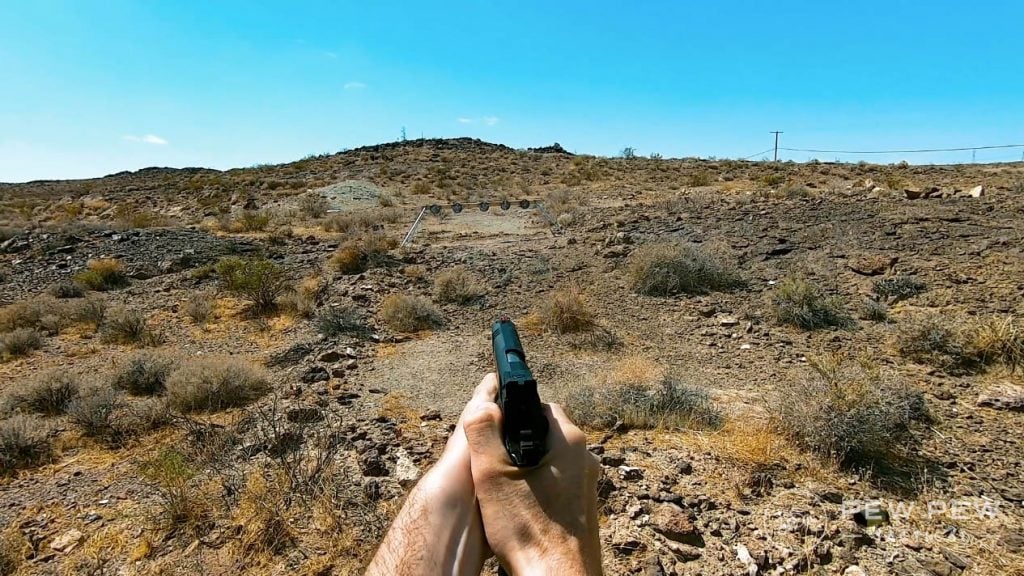
Knowing the max range of your caliber and weapon system ensures you can accurately and safely make shots within its range.
This equates to ethical and humane shots on animals if you’re a hunter and successful hits on target if you’re shooting for fun.

Basically, it allows you the ability to pick the right tool for the job.
The absolute max range a projectile will go without a target in mind isn’t a huge consideration outside of safety.
If you aim a gun up in the air in an arc-like fashion, you can make the round go pretty dang far.
But no one sells a gun because their projectile can go a max range of 10 miles in one random direction.
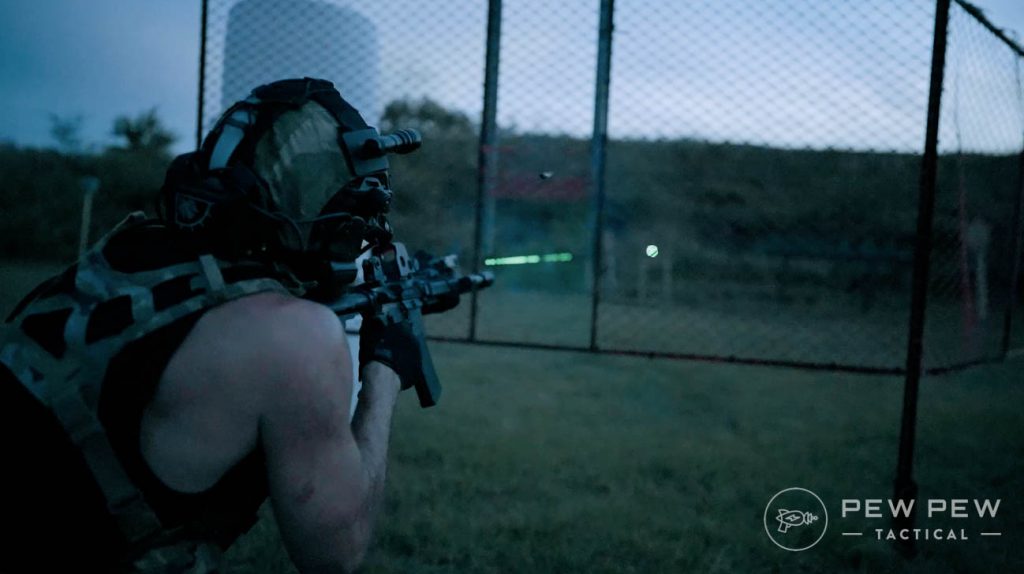
Max effective range is what people need to know, but it has some nuance behind it.
The max effective range I can hit on a piece of paper might not be the same when hunting.
In the field, I need to know how much energy the round has at a particular range to ensure I achieve a humane kill instead of merely wounding an animal.
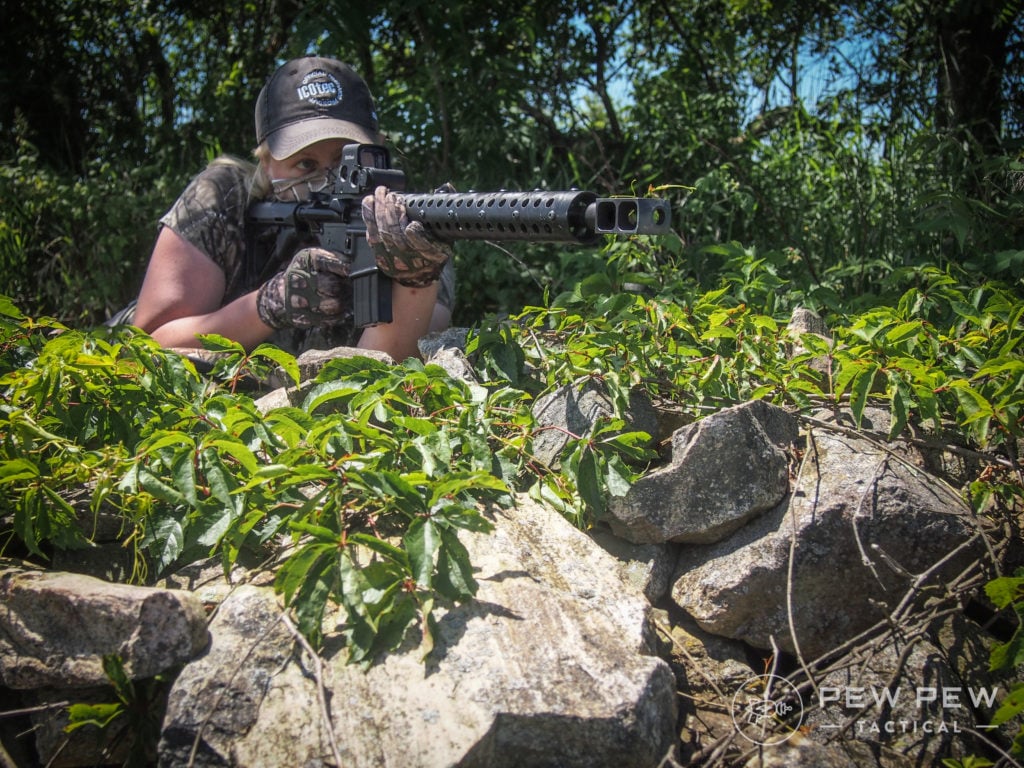
If I’m only hitting paper, then I can extend the range a bit.
So, from a ballistics standpoint, let’s look at the max effective range of pistols, rifles, and shotguns.
Effective Range: Rifles
Rifles provide the longest effective ranges of the big three types of firearms.
Within the category of rifles, we have calibers made to hit targets several miles away and calibers that work perfectly at 10-yards.
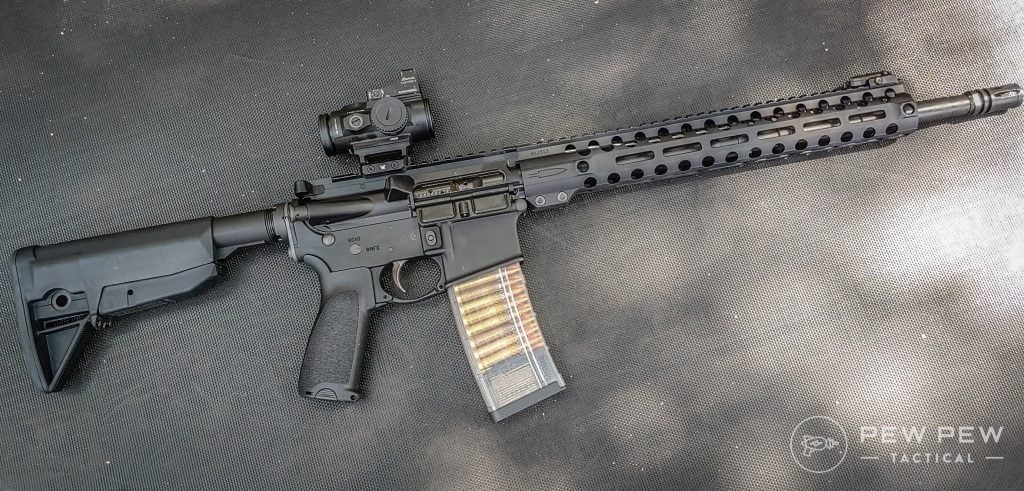
To reach a max effective range, a caliber demands a rifle that allows it to perform.
A 6.5 Creedmoor can easily be a 1,000-yard rifle cartridge, but it won’t reach that range in an AR-10 with a 10.5-inch barrel.
Not only is your effective range ammo-dependent, but it also depends on the rifle firing it.
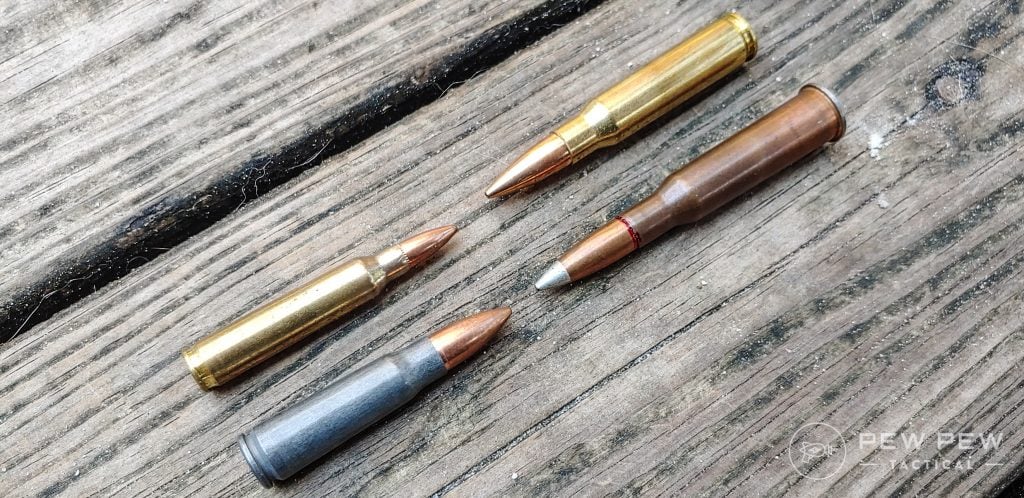
What happens when a rifle round is used at a range it’s not designed for?
When you take a caliber out to a range beyond what it’s intended for, you begin to see serious accuracy issues.
Bullets are more prone to destabilizing and feeling the effects of the wind as the range increases. Your groups open up and predictably become guesswork.
A 5.56 tasked with hitting a target out to 800-yards can be done by a skilled shooter, but it’s much easier to use a caliber designed for that distance, like 6.5 Creedmoor.
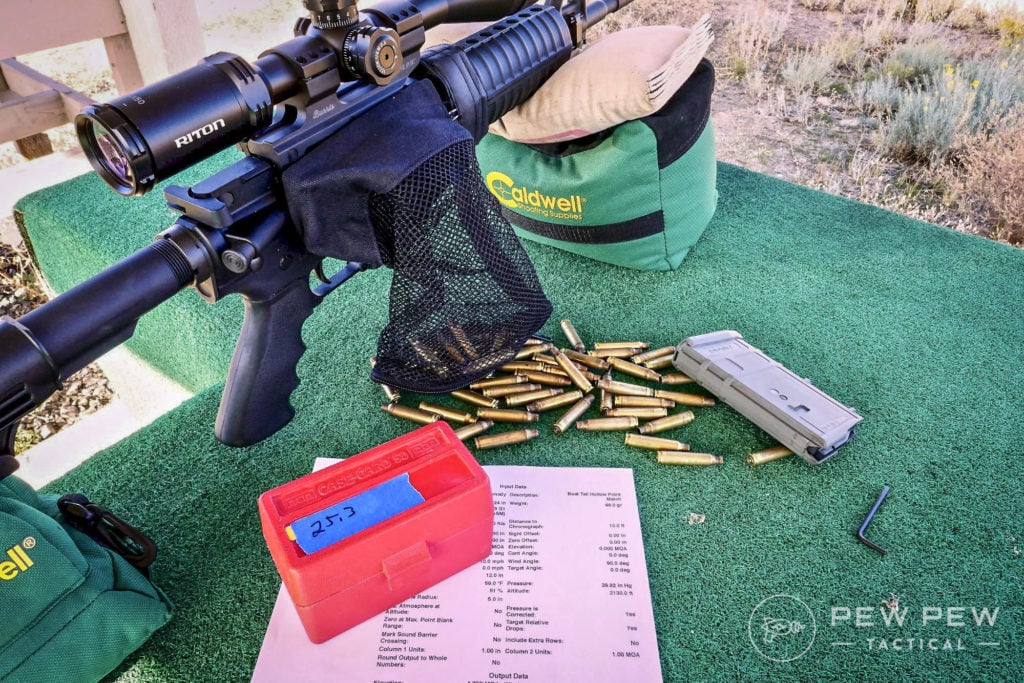
For the everyday shooter, this isn’t usually a big problem. It’s more of a concern for military members who consistently shoot further than their civilian counterparts.
That said, the average civilian shooter still needs to consider effective range, especially for defense scenarios with a rifle.
Choosing a caliber will too much oomph for short distances will punch right through a bad guy…and continue.
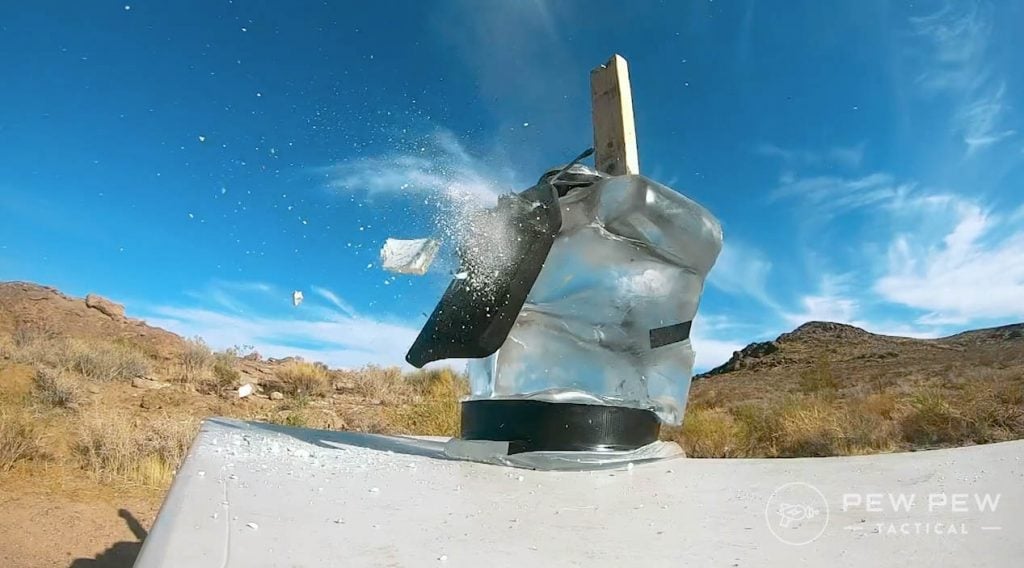
When this occurs, the round does a perfect ‘in and out,’ leaving a little hole in the bad guy.
And the round will retain enough oomph to continue traveling after it leaves the bad guy’s body. This could easily harm an innocent person.
On the other hand, an intermediate caliber at close range will yaw and tumble as it travels through a bad guy. This will create more damage overall and is less likely to over-penetrate.
Hunters most certainly need to know the effective range of their ammunition and the energy it carries downrange.

Operation outside of its effective range, a round can hurt the animal but not quickly and humanely kill it.
Like everything in the world of firearms, we choose the right tool for the right job.
An intermediate caliber can hit a target at 800-yards, but it isn’t the best tool for the job.
A 7.62x39mm round can engage at close range, but again, is better suited at further distances.
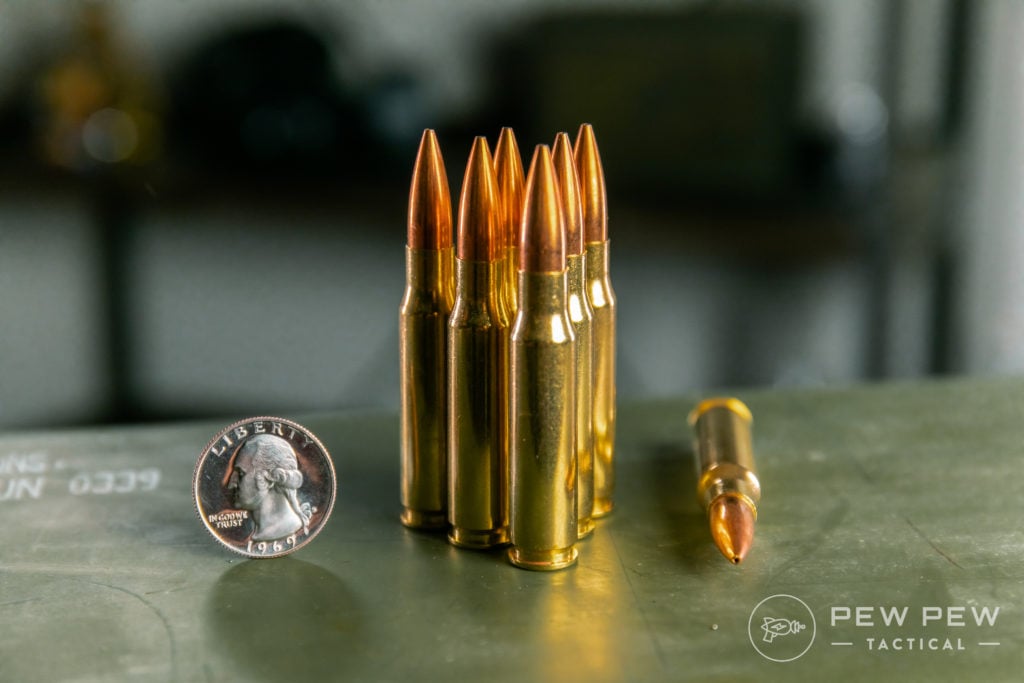
Long-Range Cartridges
For rounds like the .50 BMG, .300 Winchester Magnum, the .416 Barrett, and the .338 Lapua…the sky’s the limit.
These cartridges can reach out well beyond a mile.
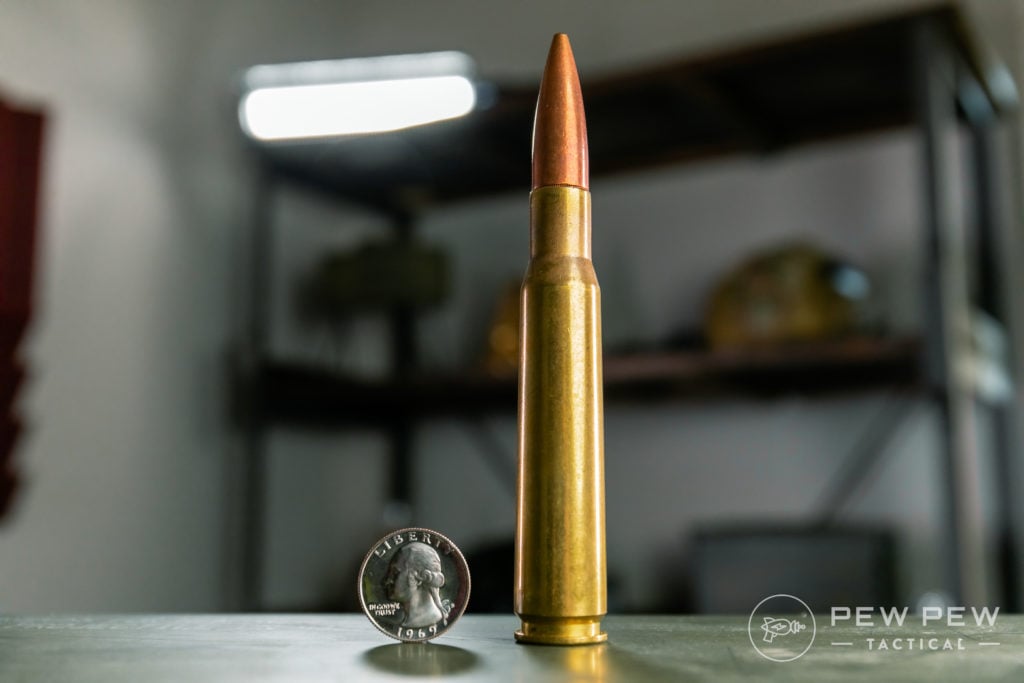
Paul Phillips set a world-record 4-mile shot using the .416 Barrett cartridge.
A Canadian sniper killed an Iraqi insurgent at a little over 2 miles with a .50-caliber sniper rifle.
With an experienced shooter behind it, these can touch pretty far out.
Big Bore Calibers
Calibers like .458 SOCOM, .50 Beowulf, .350 Legend, .375 H&H Magnum, and the like pack a lot of power but not a ton of range.
Like me sprinting, they tend to run out of gas quite quickly.
So, what purpose do they serve? Taking down a big target decisively at relatively close range.
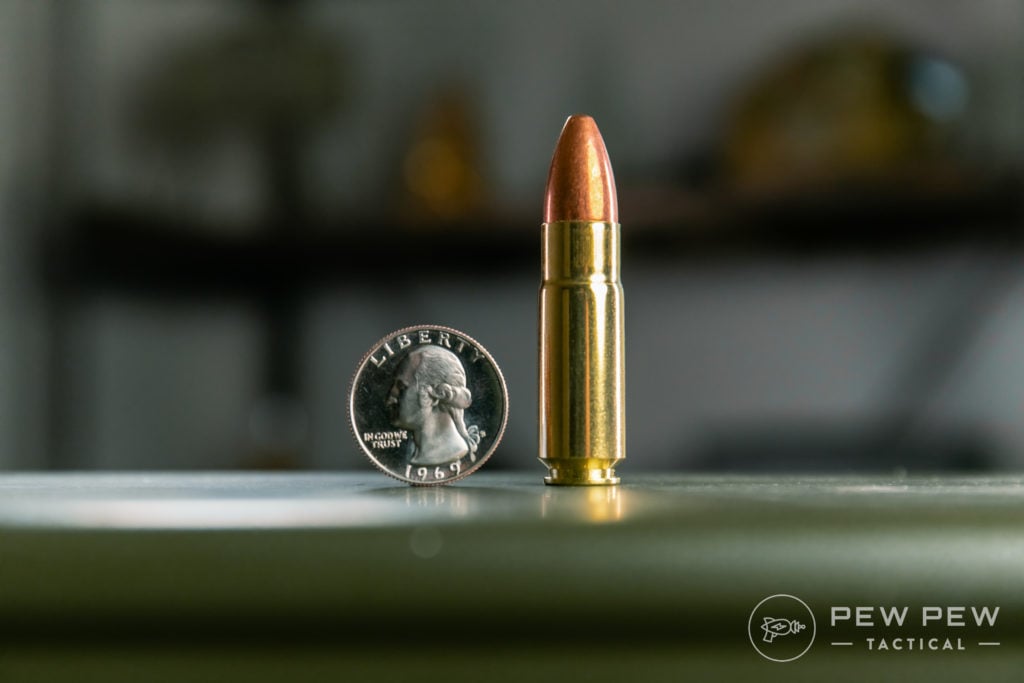
Many of these, if not all, are straight-walled calibers.
Certain states ban bottleneck rounds for hunting. So, straight-walled cartridges are the only allowed rifle rounds for hunting.
Their lack of long-range capability helps ensure a safe hunt in densely populated areas.
Full-Sized Rifle Calibers
Full-sized rifle calibers refer to full power rifle cartridges that are not long-range rounds and included favorites like .243 Winchester, .308 Winchester, 6.5 Creedmoor, .303 British, and the classic .30-06 Springfield.
These rounds are often quite effective within 1,000-yards and are popular hunting rounds well known for their ability to quickly take down animals.
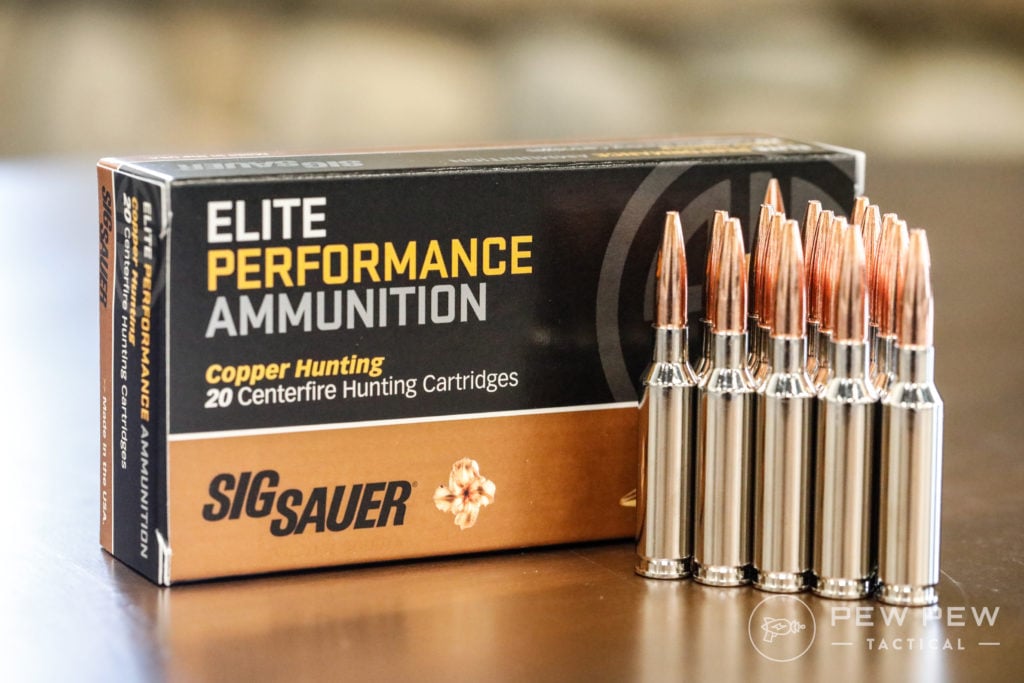
At extremely close ranges, these rounds tend to simply fly through a target unless loaded with expanding ammunition of some kind.
When these rounds penetrate at close range, they tend to poke a clean hole with minimal to no yawing or tumbling.
This makes them poorly suited for conflicts at home-defense ranges.
Intermediate Cartridges
Intermediate cartridges like the 5.56 NATO, 5.45x39mm, .300 Blackout most often see use inside of 500-yards or so.
Most dominate the 300-yard range, with the better of these rounds making it to 500-yards and possibly beyond.
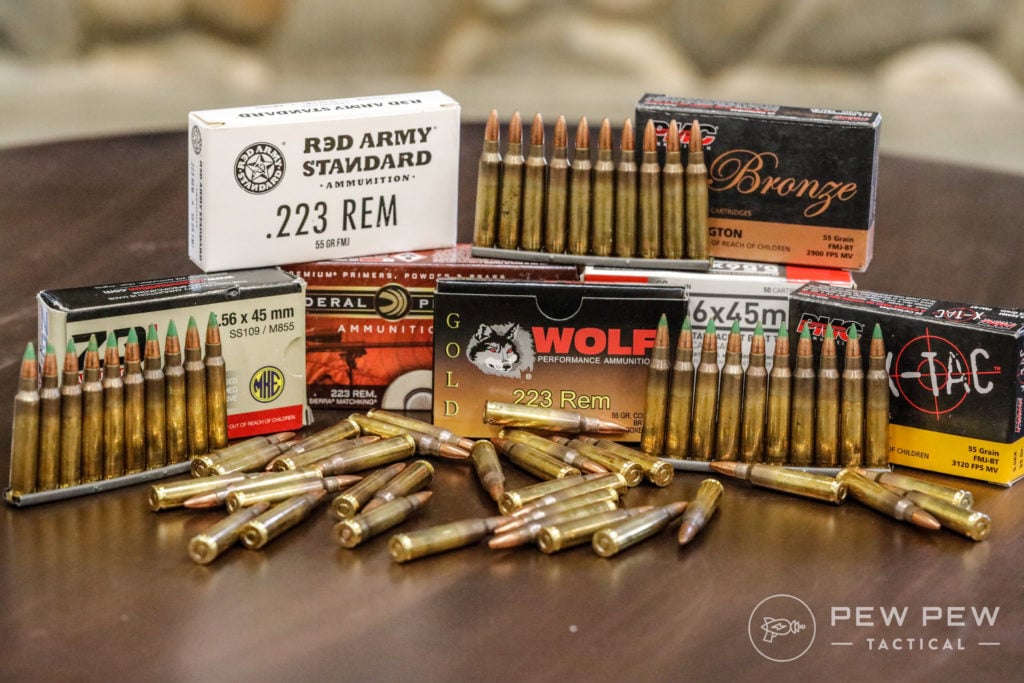
Specialized intermediate rounds like the .224 Valkyrie are changing this perception. But as of this writing, it’s safe to say they are few and far between.
These calibers occupy most modern semi-automatic rifles and are popular choices for defensive use.
At close ranges, they do very well in close-range combat and are less likely to over-penetrate; instead, they yaw and tumble when they strike soft targets.
Small Bore
Small-bore calibers like .22 LR, .17 HMR, .22 WMR, and even non-rimfires like 5.7x28mm are best used within a couple of hundred yards or so.
While the .22 LR box may say the round can travel over a mile, that’s not a realistic range.
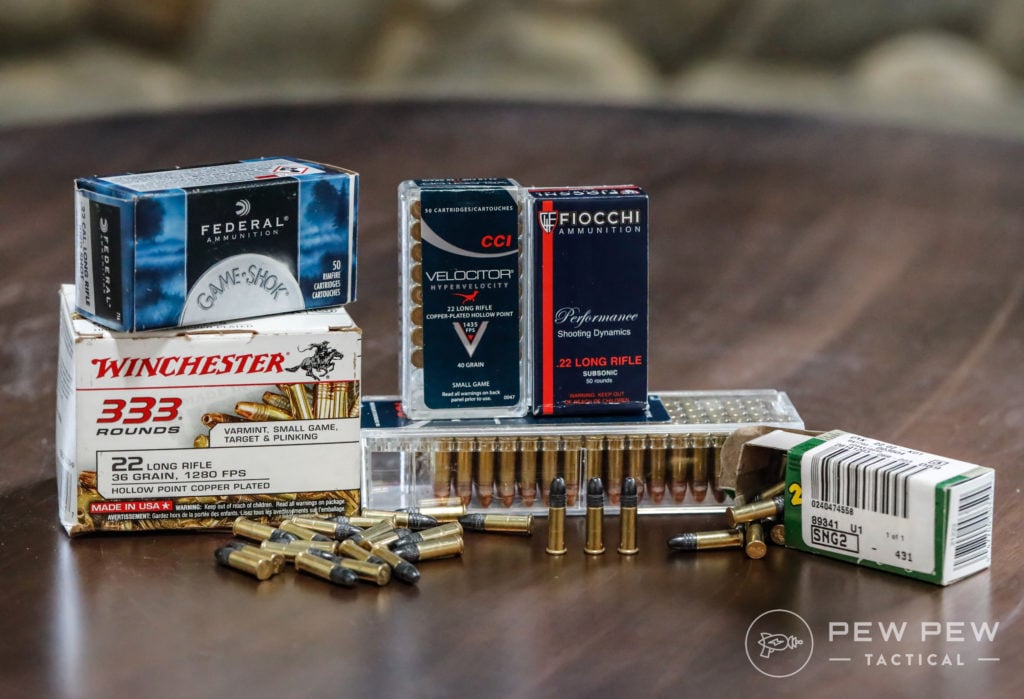
These light bullets excel within 100- to 200-yards and even work well at tens of yards on small game.
They also preserve small game, ensuring the meat stays edible when the round blazes its way through.
Effective Range: Pistols
Max range for pistols, like rifles, depends on the caliber and weapon selection.
It’s nowhere near as critical as with a rifle, but it’s worth noting.
Pistols are often firearms used at roughly 50-yards max.
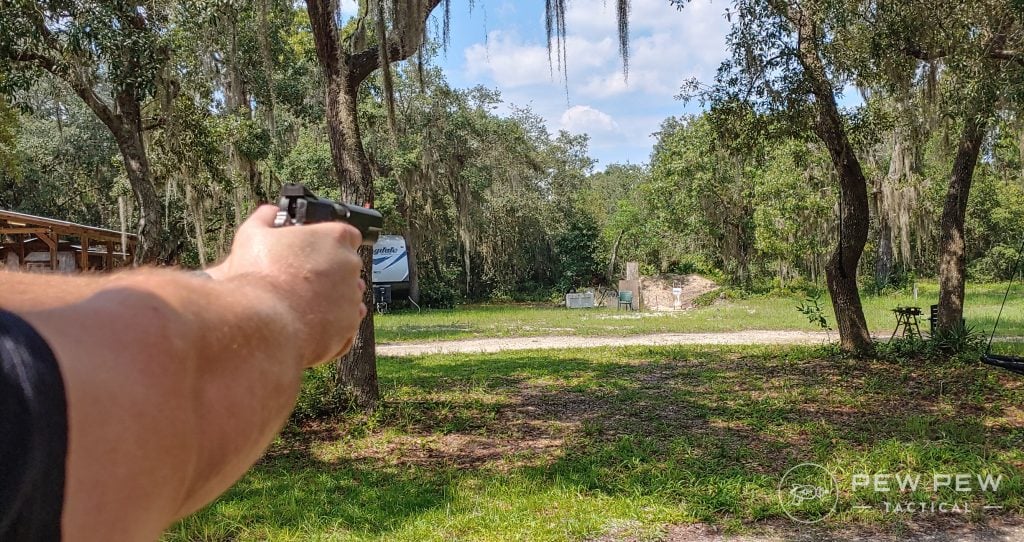
That’s not to say pistols can’t reach beyond that, but it takes an extreme amount of skill.
A skilled shooter can take a pistol out to 100-yards, but it often requires a magnum caliber, a pistol optic, and some form of rest to balance their guns on.
(We all know Ed McGivern hit targets with a .357 Magnum out to 600-yards, but that’s not a typical use.)
Extremely modern pistols like the FK BRNO can reach out to 100-yards with its seven-and-a-half cartridges, but again it’s not the common use for a pistol.
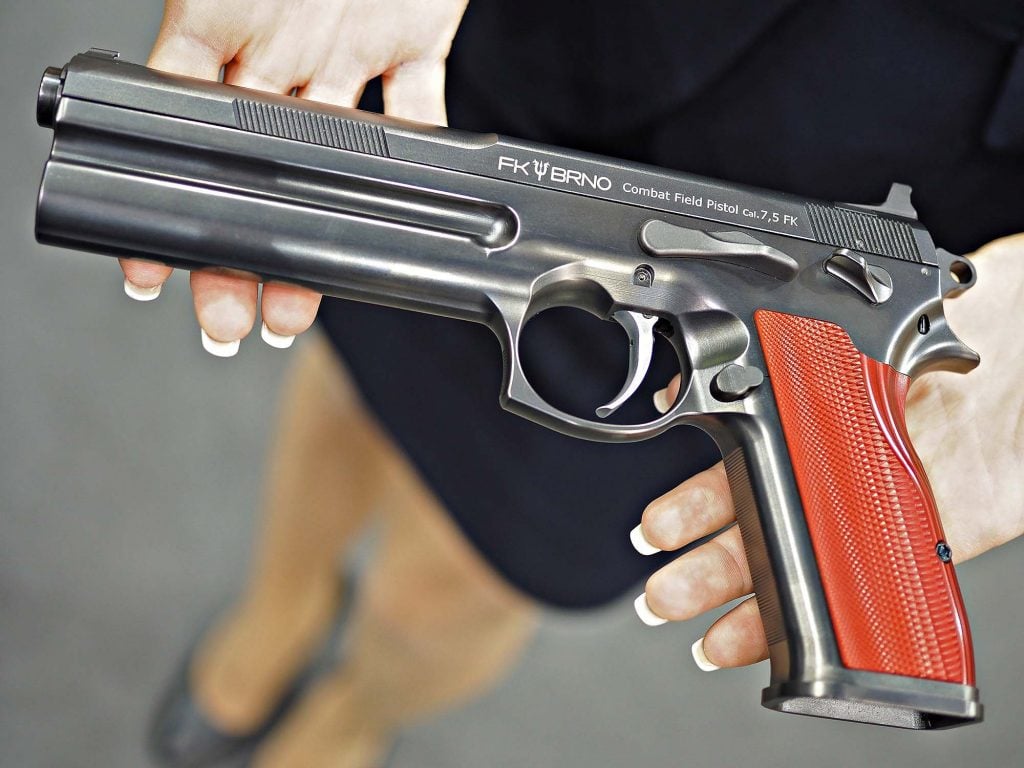
Handguns are inherently harder to shoot accurately at longer ranges due to their design.
Pistol calibers often can’t go far with an extreme amount of accuracy.
They do not stabilize and are more susceptible to wind and drop as their velocity quickly dies off.
Not to mention, the smaller a handgun, the harder it is to shoot.
Micro compact 9mms like the Sig Sauer P365 are much harder to shoot out to 50-yards than a Glock 17 equipped with an RMR.
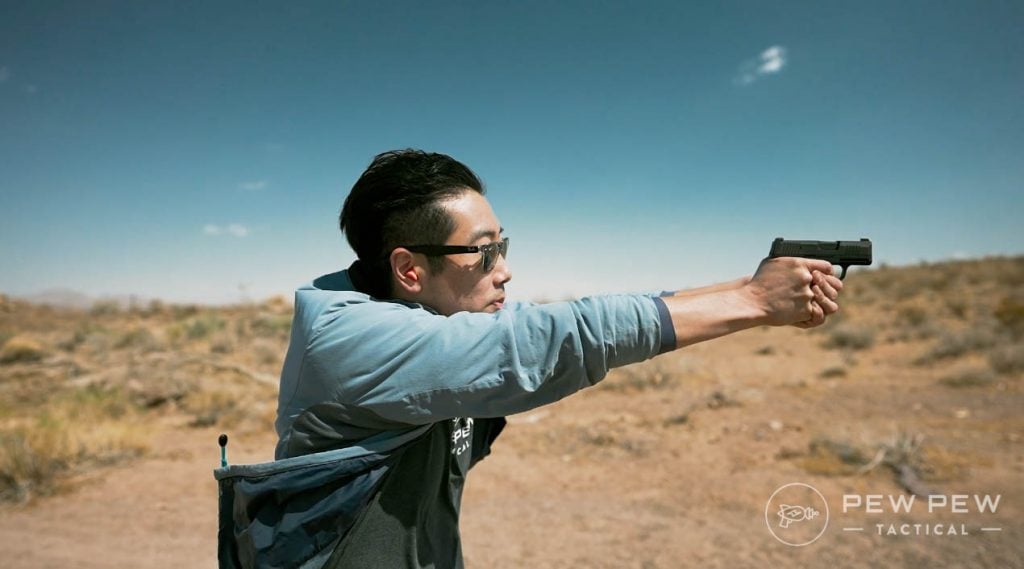
Typically, larger handguns with longer barrels offer high velocities, a longer sight radius, and more gun to grip.
When handguns are tasked with hitting targets beyond their effective range, the round is more likely to hit something besides the target — creating an unsafe situation for everyone.
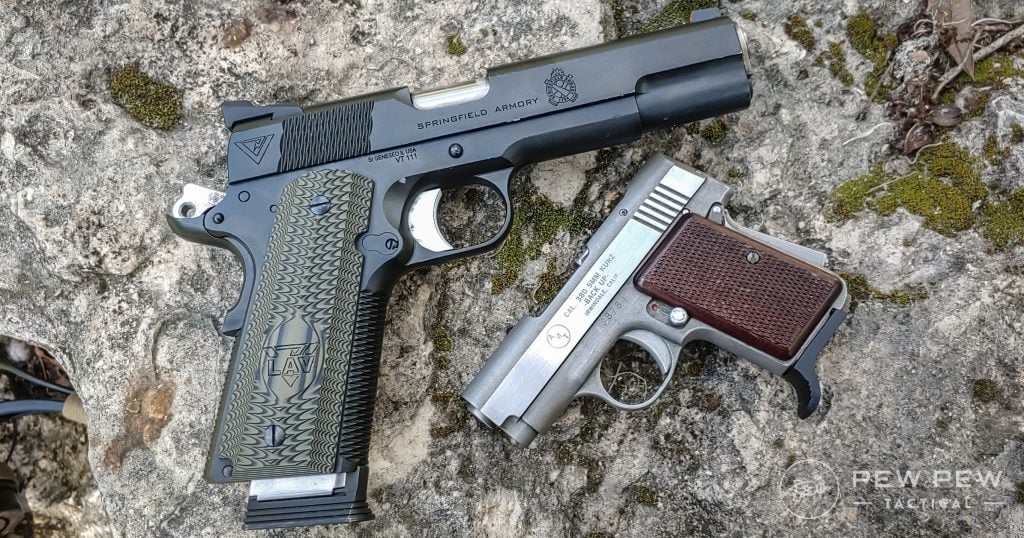
Also, handguns suck ballistically, and the further they travel, the less likely they’ll be effective on target as they lose velocity.
Standard Pistol Calibers
Standard defensive pistol calibers like 9mm, .40 S&W, and .45 ACP excel in the 0- to 25-yard range with a rough effective range of 50-yards or so.
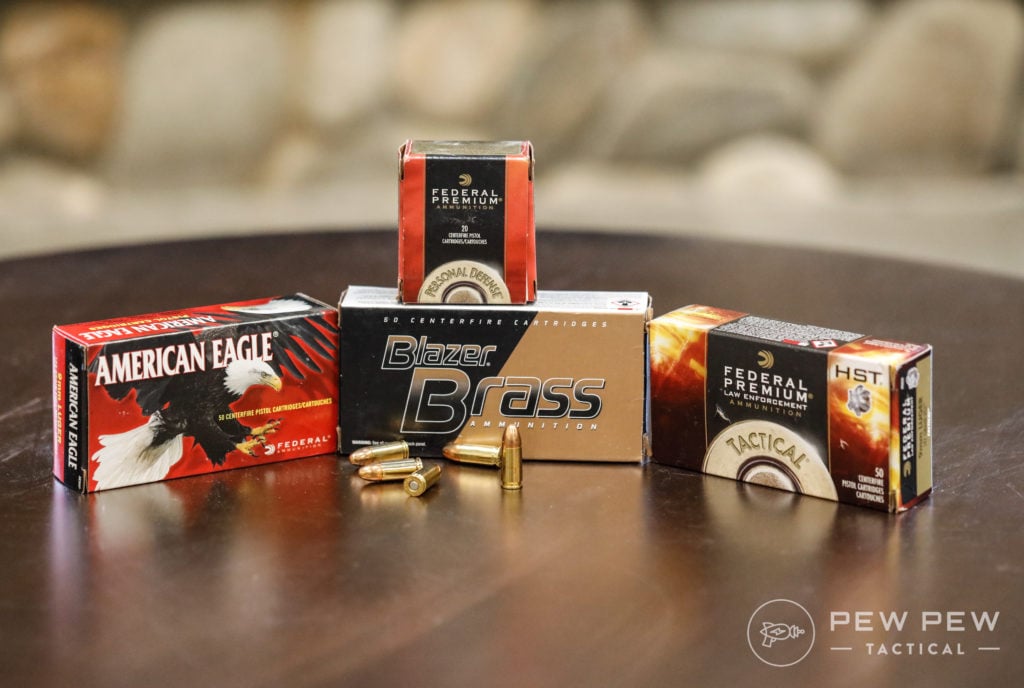
Sure, people can hit targets further than this, but it’s uncommon, to say the least.
Small Pistol Calibers
Small pistol calibers like .25 ACP, .32 ACP, and even .380 ACP typically falls short of the 50-yard range.
This compounds when placed into super small pocket pistols and mouse guns.
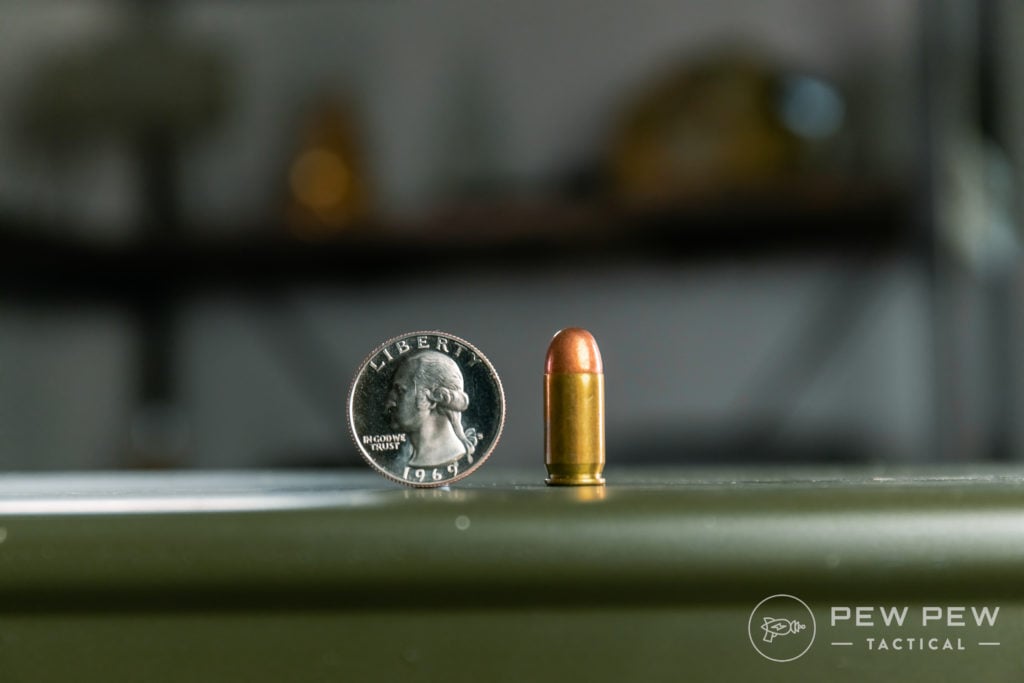
Full-sized guns in small calibers can hit targets at 50-yards, but as the gun shrinks, so does the range.
For common small pistols in small pistol calibers, stick to a 25-yard line.
Magnum Calibers
If you want to extend your range as a pistol shooter, opt for a magnum caliber.
From the .357 Magnum and 10mm to the mighty .500 S&W Magnum, these calibers engage targets out to 100-yards and beyond with the right combo of optics, gun, and accessories.
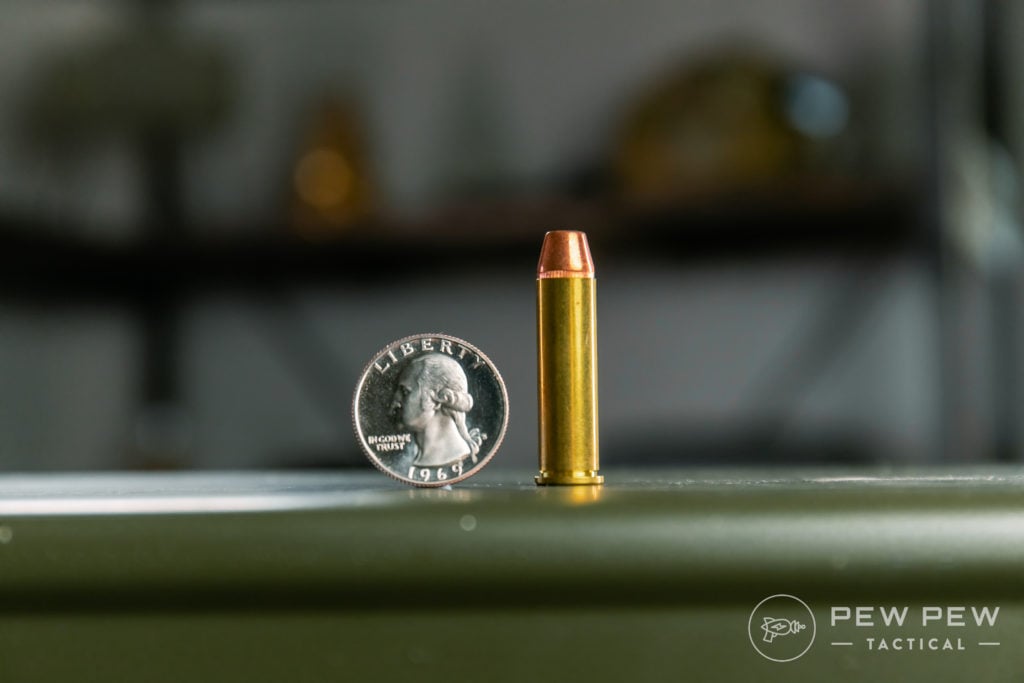
When hunting animals, shooters must pay attention to foot-pounds of energy a pistol puts on target.
At these excessive distances, the round hit the animal, but might not be enough for a humane kill.
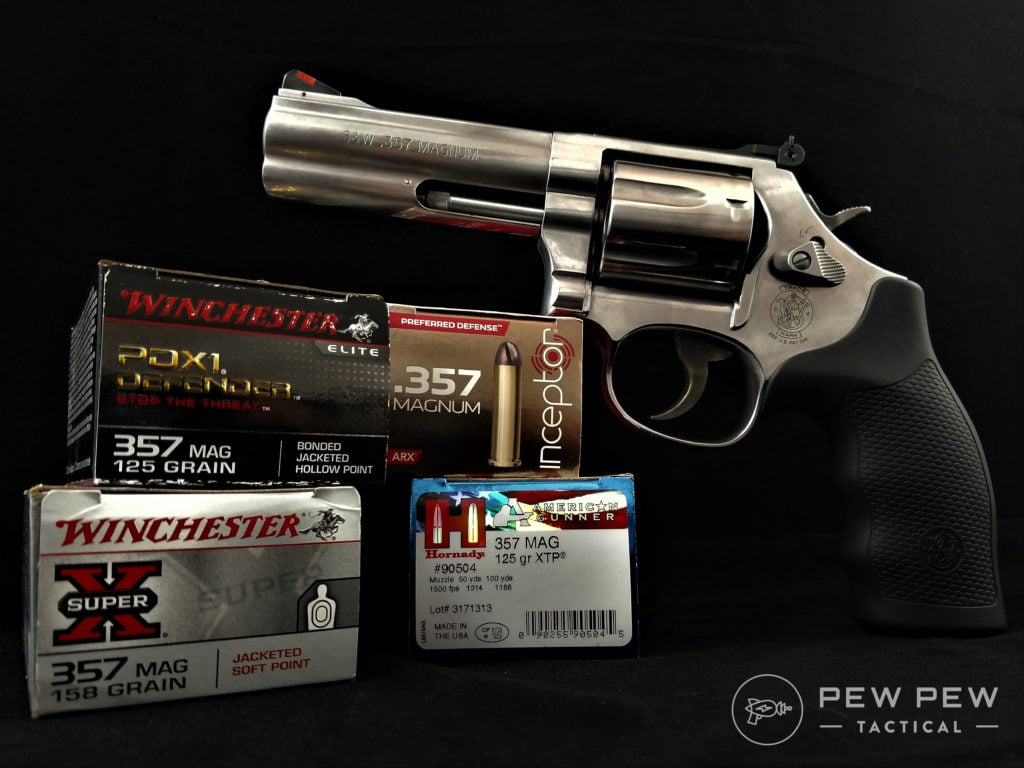
Effective Range: Shotguns
The masters of close-quarters shooting, shotguns quickly become less efficient as range increases.
Shotguns utilize three main loads — birdshot, buckshot, and slugs. Each has its own effective range.
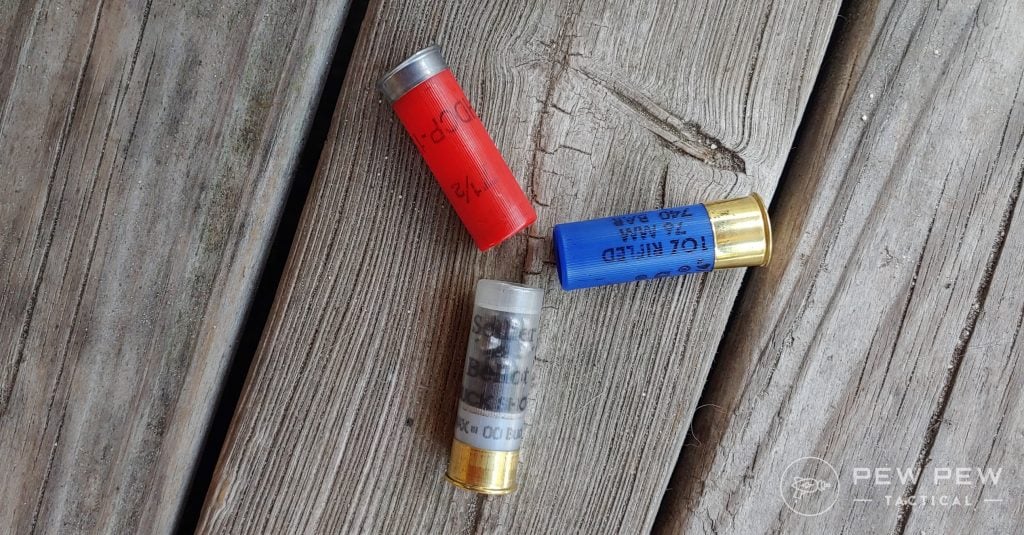
Birdshot and buckshot loads are a multitude of projectiles that spread widely as range increases.
When either of these loads is tasked with shooting a target beyond their effective range, their effectiveness lessens, and the threat to others beyond the target increases.
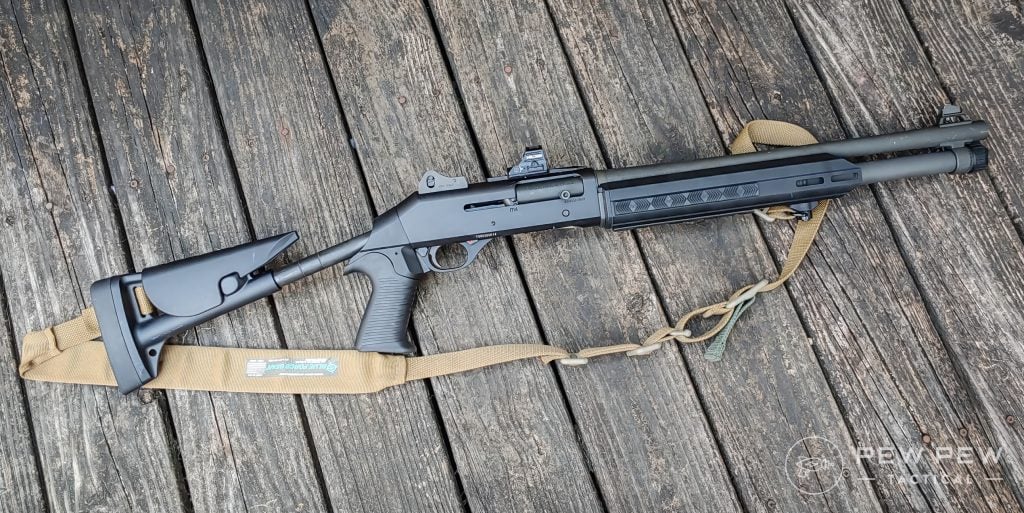
This is particularly true with buckshot, as the pellets are heavier and deadlier.
Buckshot pellets spread as the range increases, and this can cause strays pellets to hit non-targets.
This is hardly an issue for home defense, but for ranges outside the home, the pellet spread creates a serious threat to public safety.
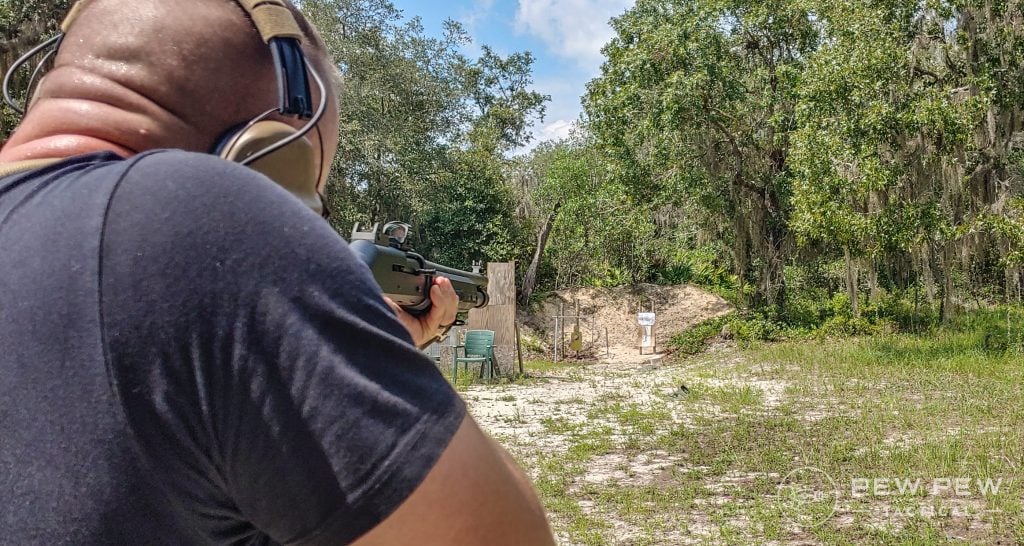
Birdshot
Birdshot is not effective for targets outside of bird and pest size.
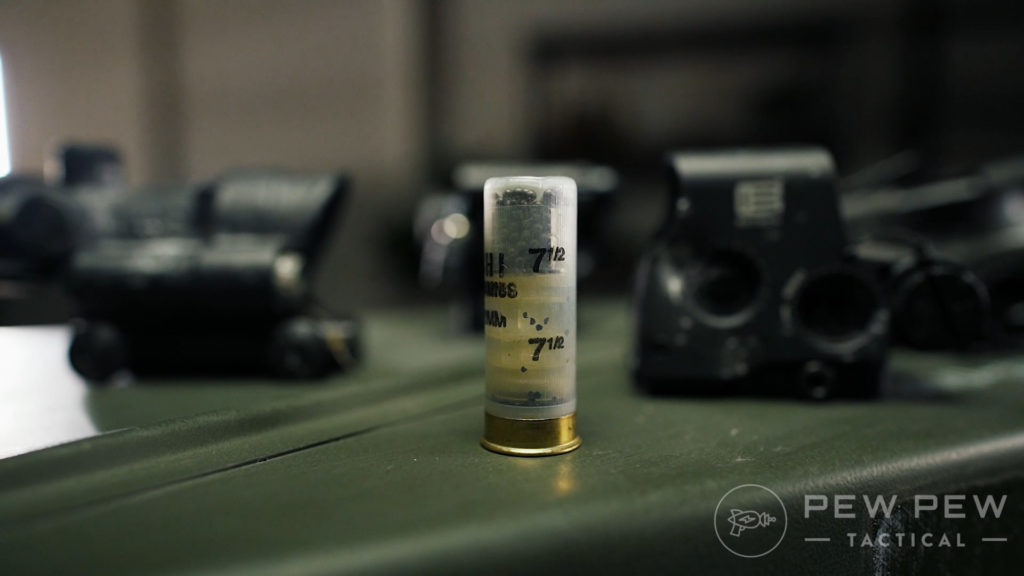
A bird’s smaller body allows this extremely small shot size to be effective out to 50-yards or so.
Shot size varies a good bit and can affect the range on particular animals.
Buckshot
With buckshot you can manage 35-yards but there’s potential for 50-yard capabilities if stray pellets aren’t a cause for concern.
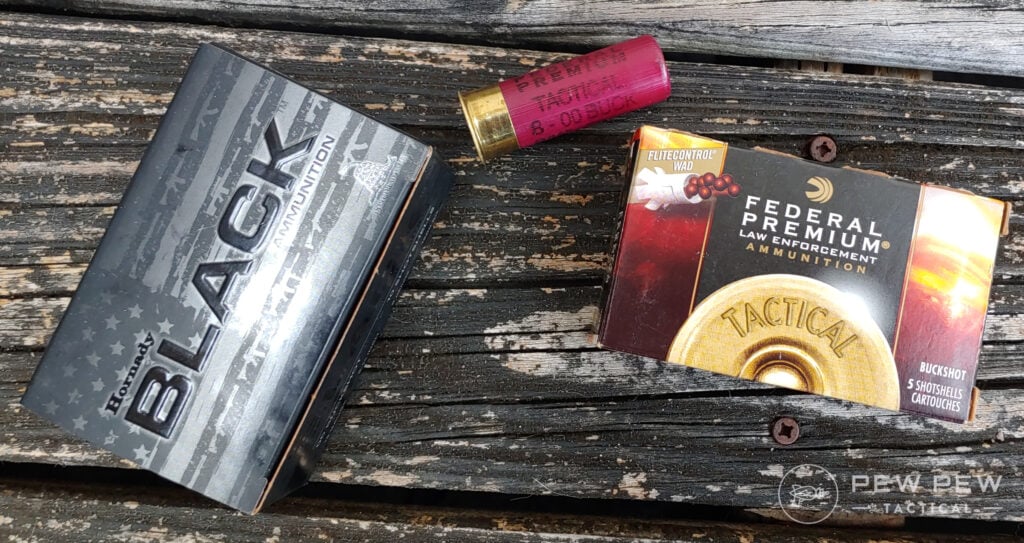
Modern loads like Federal FliteControl make shots on target out to 50-yards very possible and even safe.
Beyond 50-yards, we begin to see buckshot pellets lose lots of velocity and speed.
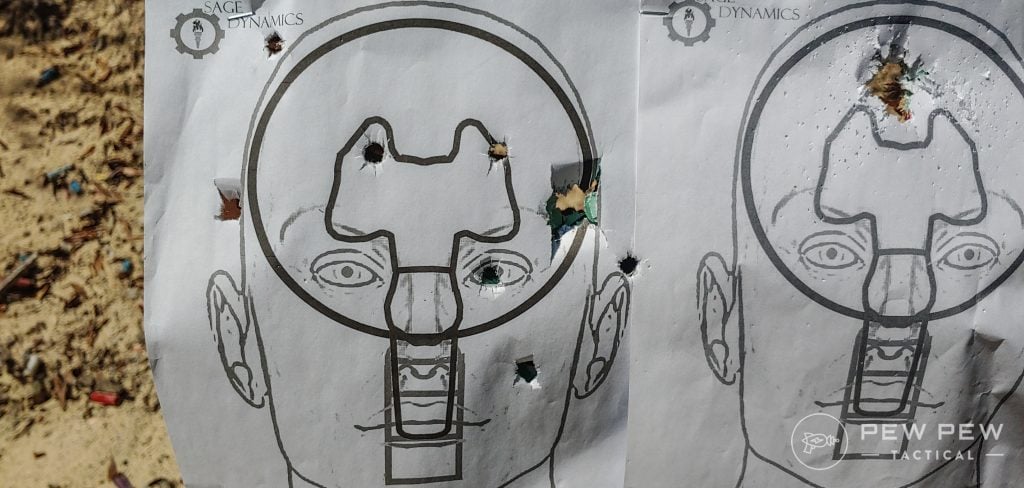
Once that occurs, they often fail to penetrate consistently.
Don’t discount their ability to harm, but don’t rely on them as effective fight stoppers or deer slayers.
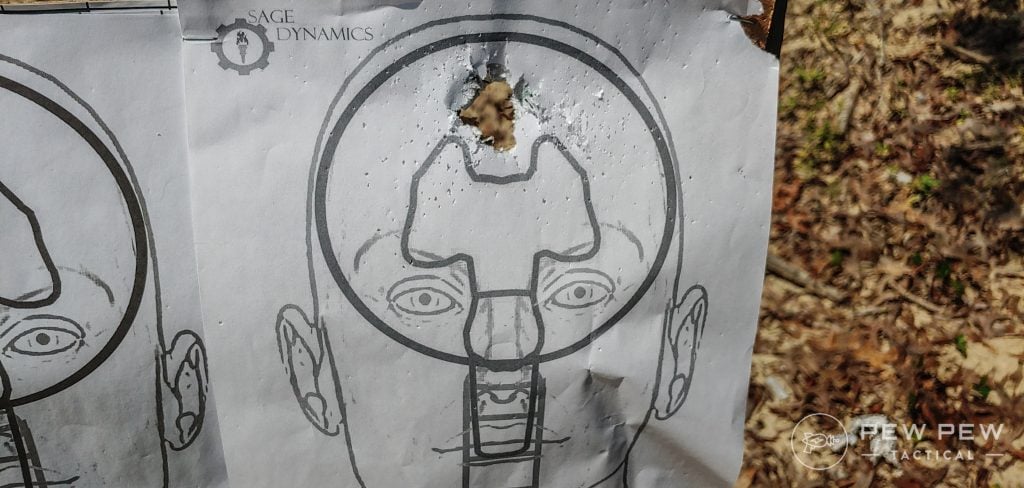
Slugs
Shotguns come in two categories when we discuss effective slug ranges — normal smoothbore shotguns and slug guns.
Slug guns utilize rifled barrels and are designed solely for slug use.
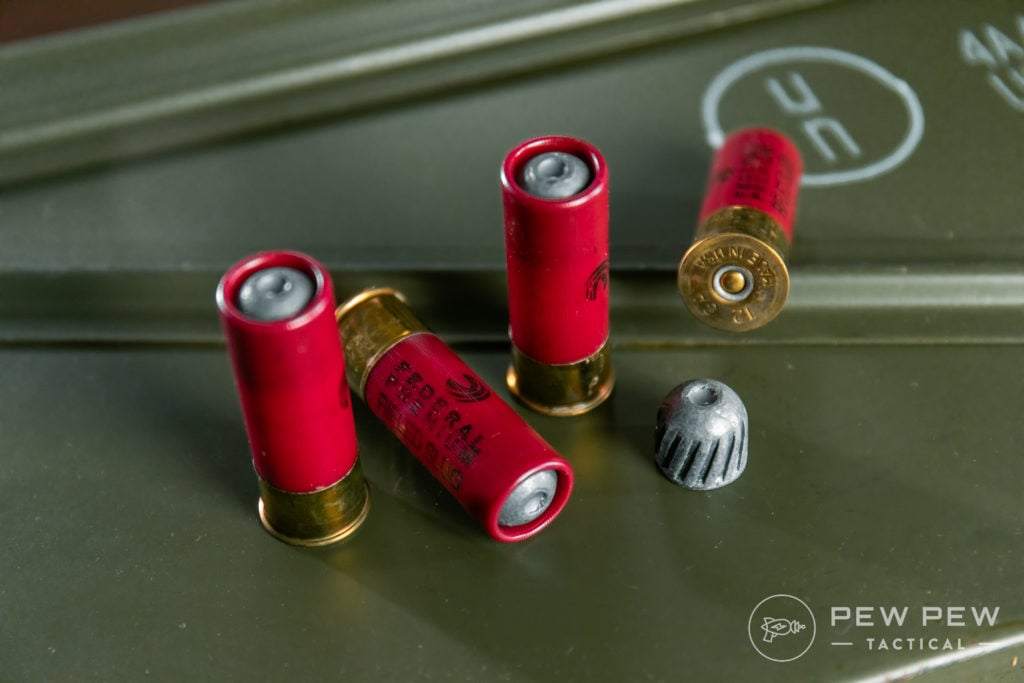
A normal smoothbore shotgun with proper sights can go out to 100-yards or so with decent effectiveness but really dominate between 50- and 75-yards.
When smoothbore shotguns push slugs beyond their effective ranges, the slugs can fly errantly and off-target easily.
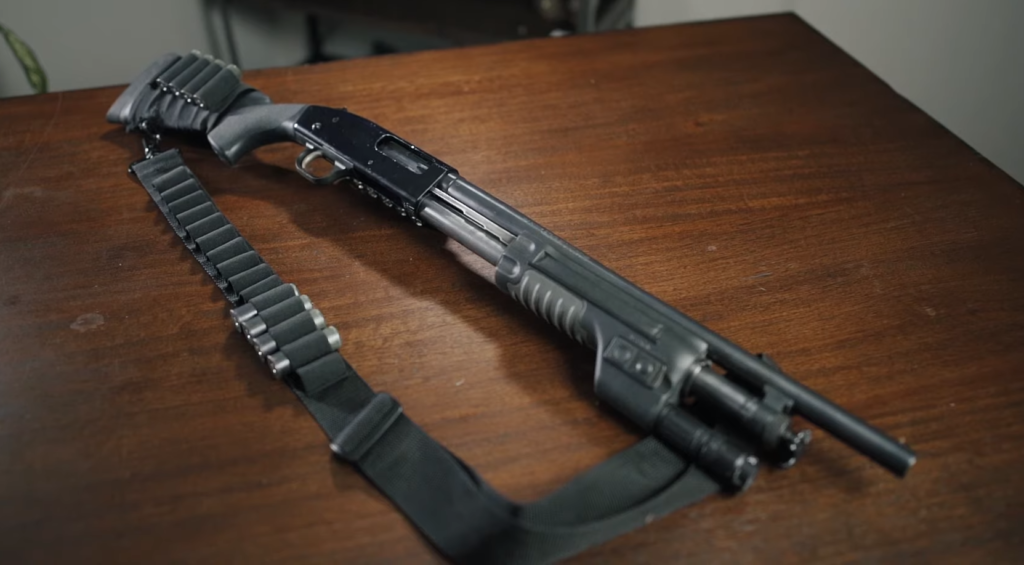
They also often lose velocity quickly due to the fact they weigh an ounce.
Slug guns extend that range to 150-yards and tend to be much more accurate.
Groups present much smaller with rifled barrels and slugs. The biggest effect on range is the weight and ballistics of the slug.
Conclusion
Effective range is a very nuanced topic, and it can be tough to discuss when it comes to generalities.
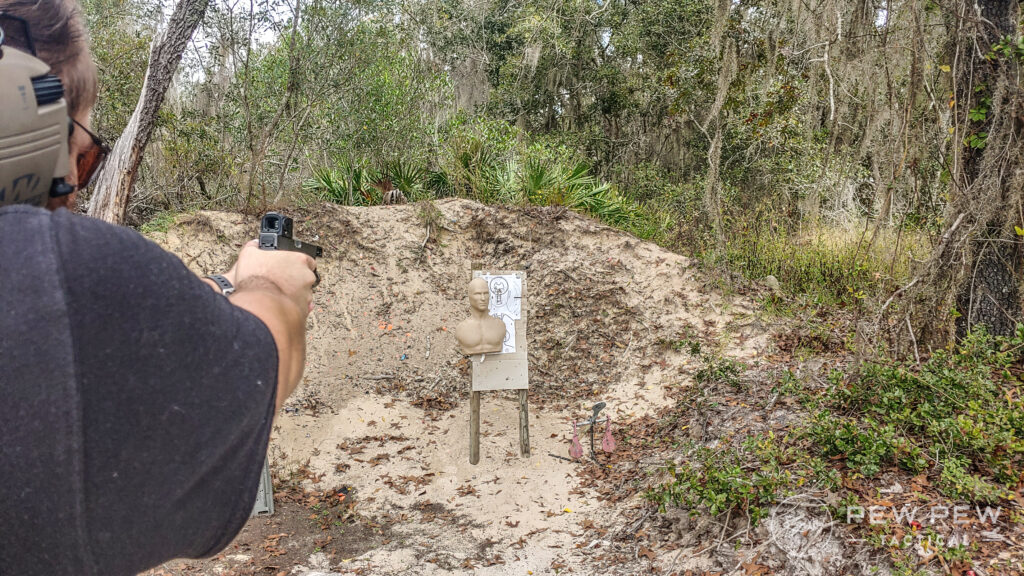
Please remember the above is more or less the average to conservative ranges of each type of weapon and each caliber of weapon.
Surely specialized shotgun slugs, wildcat cartridges, and fantastic shooters can go well beyond the above ranges.
What is the furthest you’ve pushed a cartridge or gun? Let me know in the comments below. Want to reach further? Check out our Long Range Shooting Fundamentals guide, or grab a Long Range Optic to help you reach your goal.

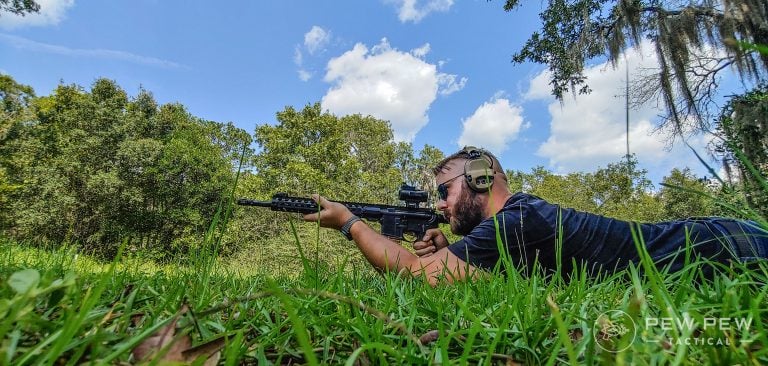
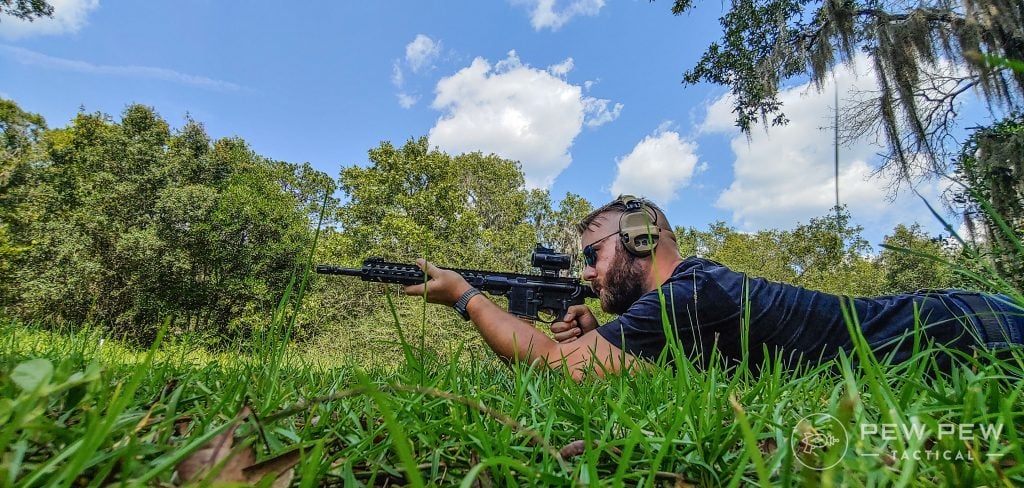







15 Leave a Reply
Winchester model 1894 .30-.30 Win. 155 grain open sight, just over 200 yards I killed a white tailed doe in Pennsylvania. That was years ago and I probably wouldn't try that shit now. I still hunt deer with that same rifle.
The complete disregard for birdshot as a viable home-defense option casts doubt on the knowledgeability of the writing staff.
Is it viable out to longer distances?
Absolutely not, but when you consider the average American home size of 2500 ft² and factor in that at least half that will be bedroom space, the distances necessary for home-defense are no more than 5-10 yards, a distance at which I'd defy you to visually differentiate between a resulting birdshot wound and a resulting buckshot wound.
Rossi R 92 is one such option.
20 inch barrel 39.5 inches overall, 6.5 pounds [+-].
I don't think the power listings for 2 or 4 inch barrels QUITE match a 20 inch.
Just curious.
You forgot a couple of options on pistol ammunition;
Long barrel lever action for 38 / 357.
When a rifle cartridge does "a perfect ‘in and out,’ leaving a little hole in the bad guy" it's due to bullet construction, not because it has "too much oomph." If you loaded a belted magnum with a hollowpoint made of soft lead and shot someone at hallway range, the bullet would absolutely fragment and leave massive craters in their back. Effective range regarding a particular target has much more to do with bullet construction than muzzle energy. I feel like this article should have emphasized that quite a bit more
Good article………. Wasn’t Ed McGivern more known for very fast and accurate close-range double-action revolver shooting; while Elmer Keith was more into center-fire (both single- and double-action) revolvers for hunting at extreme (600-yard) ranges?
Not sure where you got the "yaw and tumble" information in the rifle part of this article. It doesn't happen. Ever!
Also, you really should do a little more research before you include the 375 H&H with "popgun" AR cartridges like the SOCOM and "Legend". It's not even in the same universe!
Stick with what you good at! Handguns and shotguns!
Trust me, I've seen a lot of post mortem bullet wounds on a human being that have yawed and tumbled. U.S. Marine, Vietnam, 2 tours, Police officer, 30 years.
Travis, this was a great article. I think it would be worth a short article on the shotgun. I've seen a number of shotgun wounds and wouldn't discount birdshot for close quarters. The small pellets cause so many holes, even at short distance, it's hard to stop the bleeding. Also, there are so many positive aspects for the shotgun in defense. I think it would be worth the risk to take a shot a 25 yards, under some circumstances in a public setting. You all do great work and I know I would enjoy reading it.
Nicely done and informative. For me, all I am concerned about is self defense distances inside my home. The longest sight picture I have is around thirty feet. At these distances I don't even have to use my sights. Most of my range practice time is devoted to point and shoot. At ten yards, pointing and shooting with my Glock G30 and G36 I consistently have less than a foot group. The shorter the distance, the smaller the group gets. At three yards it is fist sized. With my 300 Blackout AR 15 the group size is half a fist at all distances. I live in the DPRC (California). Therefore, I am unlikely to shoot at any one outside of my home.
Chuck Hawks has done extensive research on maximum effective range of many rifle cartridges. It's really good, useful information. Go check it out! You will be happy that you did.
A point to consider with effective range is, as mentioned, use case. If your purpose is self defense then your limiting factor is less likely to be your abilities with your gun and more likely to be what you (read: your lawyer) can justify to a cop, prosecutor, or jury. All but the smallest of handguns can reach beyond what most (non-gun) people think is readily justifiable but special circumstances (like they are shooting at you from significant distance) can certainly make every case unique. Remember, a "jury of your peers" is statistically unlikely to include anyone who knows as much about guns as you, based solely on your having read this article.
if the bad guy goes down as a result of your shot and does not get up again, that's an effective range :)
I think the longest effective hand gun shot that took a bad guy down that I have personally seen was with a beretta 92 9mm at 80 yards.
In what situation would a cop or service member shoot a bad guy with a pistol at 80yds? Let alone “took them down” at that distance. Sounds like a bunch a bull to me.
if a bad guy warranted shooting I'd send rounds at them and expect to perforate their epidermal layer at that range and more. That being said; I don't have or would likely be using a compact pistol, or a 9 for that matter. I certainly would reach out rather than do nothing.